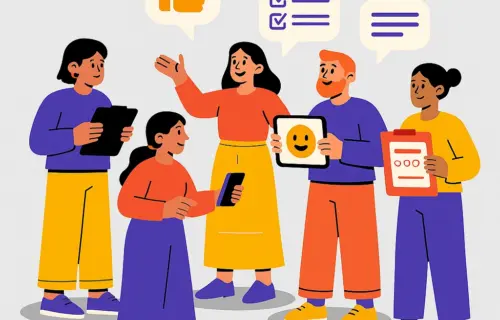Key Takeaways:
Table of contents
- Medical training events tend to rely on scattered tools and manual processes, which slows everything down.
- Centralizing event details, like schedules, speaker info, and real-time updates saves time and reduces confusion.
- Automating check-ins and feedback collection simplifies accreditation tracking.
- A good event management platform lets small teams pull off polished, professional training without needing extra staff.
Managing a medical training event can feel like you’re performing surgery with a butter knife. You’re flipping between spreadsheets, email threads, PDFs, and shared folders. You’re also managing schedules and tracking attendance for credits, often on your own or with a few hands to help.
Most teams rely on patchwork systems to make things work. But trying to manage logistics across disconnected platforms slows everything down. It makes collaboration harder. You spend more time on room assignments or correcting outdated information than actually improving the experience for your learners. And when the schedule changes, which it often does, it gets even more confusing.
The pressure to meet accreditation requirements while delivering a great experience is real, and it’s exhausting. But with the right approach and tools, you can make your medical training more engaging without hiring more help or losing your sanity.
1. Ditch the Spreadsheets: Manage Everything in One Platform
Medical education teams say the same thing: event details are everywhere. One person has the session slides, someone else has the speaker bios, and the latest agenda is… maybe in your inbox?
Finding the latest speaker bio or session change shouldn’t feel like a treasure hunt. Getting everything in one place sounds obvious, but it can really improve the flow of your event.
When your session details, speaker bios, room numbers, and attendee materials all live in one centralized event platform, things start to come together easily. You stop repeating yourself. Your team stops forwarding tons of emails. Your attendees don’t ask the same questions over and over.
With fewer moving parts, you get more time to fine-tune the content and support speakers without getting stuck on logistics.
Create and Adjust Agendas Without Starting From Scratch
Multi-track events are complicated. You’re coordinating rooms, presenters, session types, and timing. If you’re using manual tools, one small change takes hours to fix. And then you need to notify everyone involved.
With the right scheduling tool, you can respond to changes in real time without rebuilding your whole agenda. If it’s a speaker who cancels, or a room that became unavailable, you can make quick updates and keep everything (and everyone) on track.
Communicate Changes Instantly, Not After It’s Too Late
Speaker no-show? Room change? Tech issue? Trying to keep everyone in the loop is a real headache.
When a speaker drops out or a room changes last minute, updates need to happen fast. Instead of resending PDFs or hoping attendees catch your last-minute email in time, you can use a tool that updates everyone in real time.
2. Stop Chasing Attendance Sheets and Missing Feedback
If your medical training events involve continuing education credit or compliance tracking, you know how tedious it is to pull attendance from paper sign-in sheets or scattered spreadsheets.
You can simplify this by using an event management tool that tracks attendance and feedback data in real time. You can do that by:
- Using QR codes to check in attendees with a quick scan.
- Automatically trigger specific feedback forms at the end of each session.
Real-time attendance and feedback tools reduce manual work and give you the data you need to validate participation, report on requirements for Continuing Medical Education, and improve your program. All without hours of post-event paperwork.
3. Make Your Event Look as Professional as It Is
You’re already putting in the work to make your training meaningful. The way you present it deserves more than a plain email and a link to a spreadsheet.
Details like having branded pages and materials with your logo, creating personalized badges, or letting attendees see their personalized schedules on a mobile app can reinforce trust and elevate the experience for your learners and stakeholders.
Run High-Quality Medical Training Events Without Growing Your Team
Most medical education teams don’t have the luxury of hiring additional staff. But when your tools are working for you instead of against you, you don’t need to.
Sched makes it easier to:
- Set up your first event fast (no IT required).
- Reuse templates for future events.
- Manage schedules, speakers, attendee communication, and feedback in one easy-to-use platform.
- Give real time updates for organizers, speakers, and attendees, both on desktop and mobile.
And because it’s all in one place, you can easily share responsibilities without extra meetings to stay aligned.
Sched is trusted by leading healthcare institutions like Yale New Haven Health and Mayo Clinic College of Medicine and Science. It’s built for teams with high standards and limited resources who run accredited programs, Continuing Medical Education workshops, and complex clinical training events.
You can start small. You can start today. And you can finally spend more time on what matters: helping your medical team grow, while you focus on better training, not just logistics.
Try Sched for free and discover how simple it can be to run smooth, compliant, and professional training events, even with a small team.








